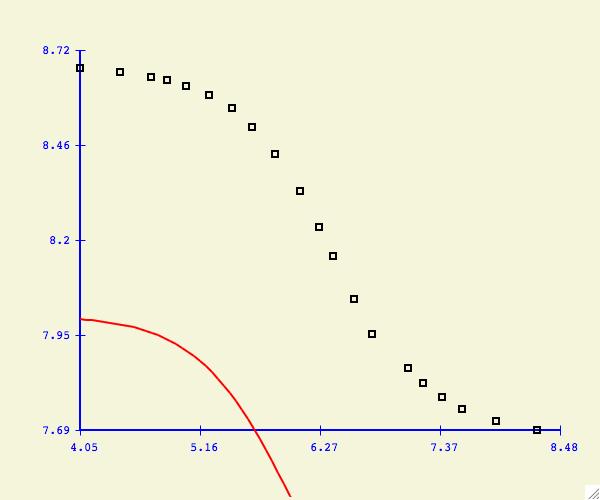

Conservative single value input parameters are typically used to represent ARF, RF, LPF and BR. = /s), ST is the source term (Bq), and DCF is the dose conversion factor (Sv/Bq). The SODA development project was funded through a grant from the DOE Nuclear Safety Research and Development Program. It is important to note that SODA does not replace or compete with codes such as MACCS or RSAC rather it is viewed as an easy to use supplemental tool to help improve risk understanding and support better informed decisions. SODA provides improved risk understanding leading to better informed decision making associated with establishing nuclear facility material-at-risk limits and safety structure, system, or component selection.
#Fitplot r9 software#
SODA is a standalone software application and does not require MATLAB to function.
#Fitplot r9 mac#
SODA, developed using the MATLAB coding framework, has a graphical user interface and can be installed on both Windows and Mac computers. In cases where an input variable distribution is unknown, a traditional single point value can more » be used. SODA then randomly samples each distribution input variable and calculates the overall resulting dose distribution. Users can also specify custom distributions through a user defined distribution option. SODA allows users to select the distribution type and parameter values for all of the input variables used to perform the dose calculation. Rather than producing a point estimate of the dose, SODA produces a dose distribution result to allow a deeper understanding of the dose potential.
#Fitplot r9 portable#
Idaho State University, in collaboration with Idaho National Laboratory, has developed a portable and simple to use software application called SODA (Stochastic Objective Decision-Aide) that stochastically calculates the radiation dose distribution associated with hypothetical radiological material release scenarios. Unmitigated design basis events that sufficiently challenge dose evaluation guidelines or exceed the guidelines for members of the public or workers, merit selection of safety structures, systems, or components or other controls to prevent or mitigate the hazard. Department of Energy use unmitigated hazard evaluations to determine if potential radiological doses associated with design basis events challenge or exceed dose evaluation guidelines. Check out Ista Zahn's short list of 'Useless but Fun R Packages' here, and enjoy watching what the cow says, or having R tell your fortune.Nonreactor nuclear facilities operating under the approval authority of the U.S. Now that you've taken our tour of 9 useful R data viz packages, you probably want to learn about some useless but fun R packages. And you can use RColorBrewer with dygraphs to choose a different color palette for your time series- check out this example to see how.Ĭreated by: Dan Vanderkam and RStudio Where to learn more: dygraphs for R It's got lots of other nifty interactivity features, like synchronization or the range selector shown above.īut dygraph's interactivity doesn't come at the expense of speed: it can handle huge datasets with millions of points without slowing its roll. What's powerful about dygraphs is that it's interactive right out of the box, with default mouse-over labels, zooming, and panning.

This package provides an R interface for dygraphs, a fast, flexible JavaScript charting library for exploring time-series data sets.
#Fitplot r9 series#
Time series chart with range selector ( RStudio ) But fans argue that learning to master ggplot2 and (more generally) the tidyverse way of handling data pays huge dividends for any data scientist working in R.Ĭreated by: Hadley Wickham, available in Mode Where to learn more: ggplot2 The drawback of ggplot2 is that it may be slower than base R, and new programmers may find the learning curve to be a bit steep.

With ggplot2, you can, for instance, start building your plot with axes, then add points, then a line, a confidence interval, and so on. Ggplot2 is based on The Grammar of Graphics, a system for understanding graphics as composed of various layers that together create a complete plot. In the words of its creator, ggplot2 “takes care of many of the fiddly details that make plotting a hassle (like drawing legends) as well as providing a powerful model of graphics that makes it easy to produce complex multi-layered graphics.” That's why ggplot2 was born: to make building custom plots easier. While it's relatively easy to create standard plots in R, if you need to make a custom plot, things can get hairy fast. Scatterplot ( Hadley Wickham / Tidyverse )


 0 kommentar(er)
0 kommentar(er)
